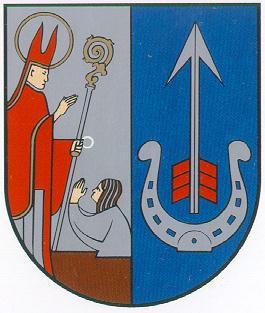Punia: Difference between revisions
Jump to navigation
Jump to search
Knorrepoes (talk | contribs) No edit summary |
Knorrepoes (talk | contribs) m (Text replace - "|width="15%"|50 px|right |}<seo title="Lietuvas Heraldika" /" to "|width="15%"|50 px|right |}<seo title="herb, herbas, heraldika" /") |
||
| Line 3: | Line 3: | ||
|width="70%" align="center" |'''Heraldry of the World<br/>Civic heraldry of [[Lithuania]] - [[Lithuania|Lietuvas Heraldika ]]''' | |width="70%" align="center" |'''Heraldry of the World<br/>Civic heraldry of [[Lithuania]] - [[Lithuania|Lietuvas Heraldika ]]''' | ||
|width="15%"|[[File:Lithuania.jpg|50 px|right]] | |width="15%"|[[File:Lithuania.jpg|50 px|right]] | ||
|}<seo title=" | |}<seo title="herb, herbas, heraldika" /> | ||
'''PUNIA''' | '''PUNIA''' | ||
Revision as of 11:04, 17 September 2014
| Heraldry of the World Civic heraldry of Lithuania - Lietuvas Heraldika |
PUNIA
County : Alytus
Municipality : Alytus
Origin/meaning
Punia received city rights on November 10, 1791 by the King of Poland and Lithuania, Stanislaus Augustus.
The saint in the left half shows the image of St. Stanislaus, Bishop of Krakow, obviously taken as a symbol for the King. The origin or meaning of the horse shoe and arrow is not known.
The arms were abolished already in 1792 and restored and officially granted on June 7, 1989.
Contact and Support
Partners:
Your logo here ?
Contact us
© since 1995, Heraldry of the World, Ralf Hartemink 
Index of the site
Literature : Rimsa, 1998











